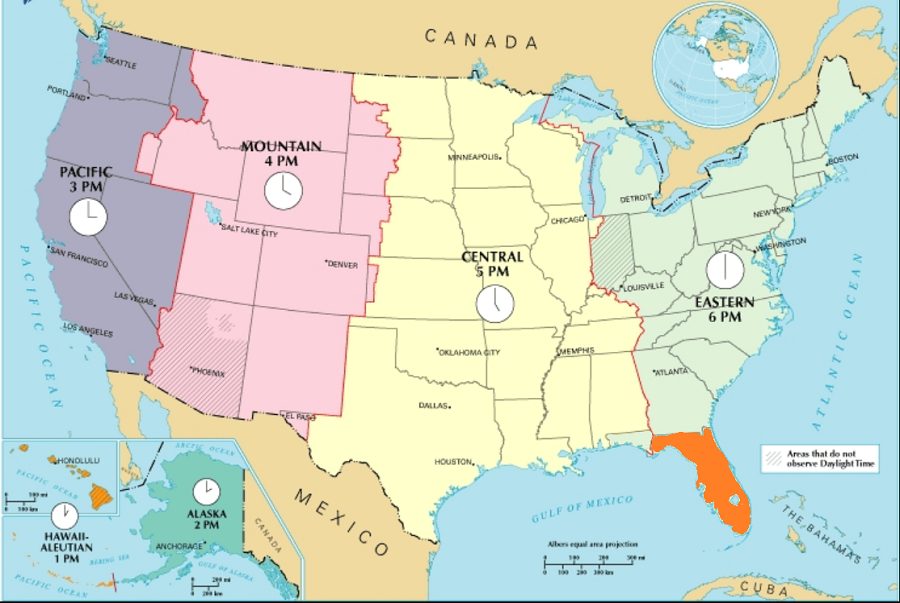
If Florida legislators have their way, the Sunshine State will get more sunshine during daytime hours by creating a new Time Zone that wouldn’t change clocks forward in the spring nor back in the fall. If the federal government were to grant Florida permission to create this new time zone, it would join Arizona and Hawaii which do not participate in Daylight Saving Time. But whether or not the federal government grants such a request is a big “if.”
On Tuesday, Florida’s Senate approved the “Sunshine Protection Act” which formally asks Congress to allow the state to observe daylight saving time year-round and not just during the 8 months that is standard elsewhere in much of the US. The bill was approved by the Florida House in February and now goes to Governor Rick Scott for signing. If Governor Scott signs the Act, Congress needs to get involved. With other legislative battles underway for hot-ticket items such as immigration reform and gun control, Congress may not act. But if Congress does act, Florida would shift to the Atlantic Time Zone, separating itself from all other states along the US East Coast. Florida would join Puerto Rico, the U.S. Virgin Islands, and the Canadian Maritime provinces in its new time zone. Portions of the Florida panhandle now considered to be in the Central Time Zone would then shift to the Eastern Time Zone.
State Senator Greg Steube, who sponsored the bill, said that the idea of year-round daylight time has enormous support among Floridians. “I’ve heard from mayors across the state that it’s going to save them money because they don’t have to light their softball fields at night,” Steube said, according to the Miami Herald. “I can’t tell you how many people have come up to me who have said even my high school-age kid, it’s hard to get him up in the morning when we fall back the clocks.”
If Congress doesn’t act through updating statute, the Secretary of Transportation may issue a regulation to make the change to the time zone.
Clocks have been springing forward since March 19, 1918 when the US implemented Daylight Saving Time. The rationale for the time change then revolved around fuel and money savings. But since then, studies show changing clocks may do more financial harm than good. A 2011 study showed that electricity consumption grew as much as 4% after some Indiana counties began observing Daylight Saving Time. Other studies have shown similar results, with the time change costing more as it relates to energy consumption.
Daylight Saving Time begins at 2am on Sunday, March 11. By springing clocks forward, sunrise and sunset get pushed an hour later, translating to brighter evenings with later sunsets. But because clocks are springing forward at night, you also lose an hour of sleep on Saturday night. Florida will continue to change clocks until both the Florida Governor and Congress (or the Secretary of Transportation) approves of the time zone move.